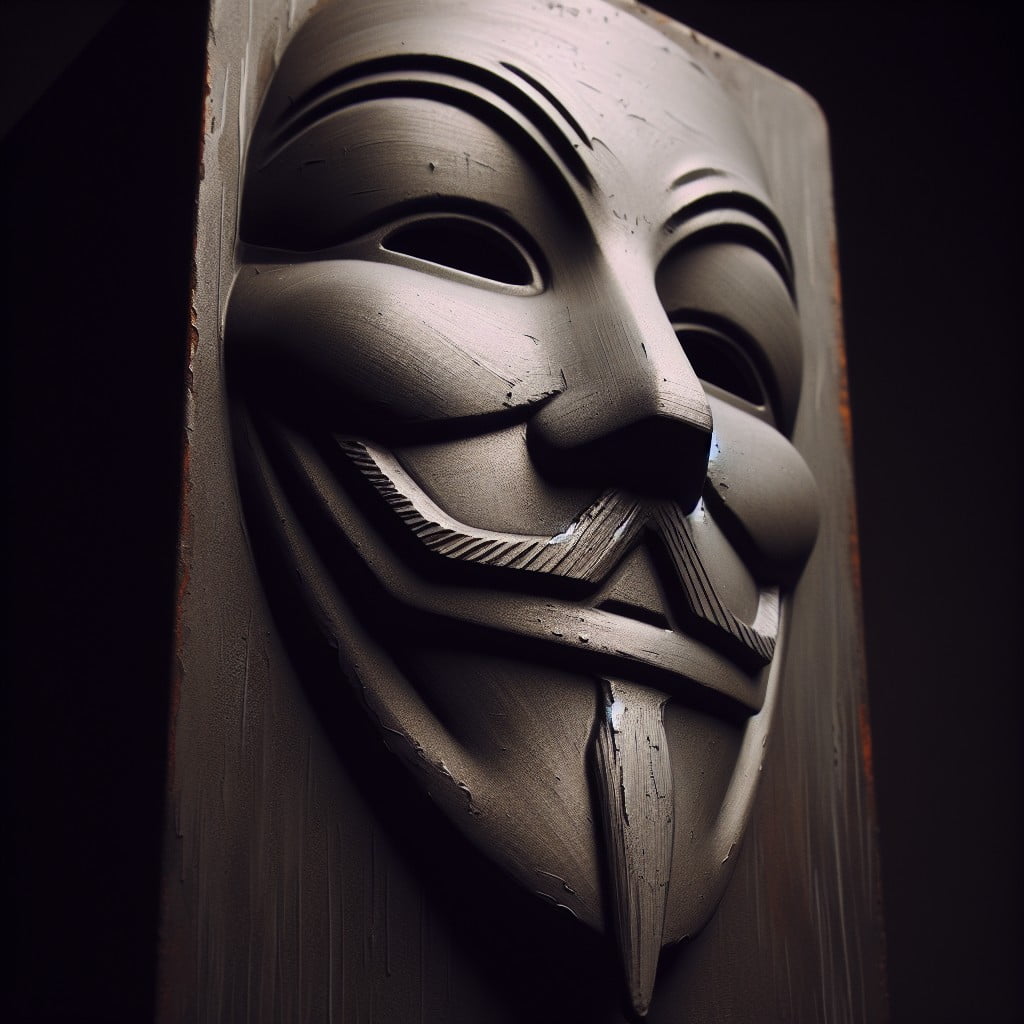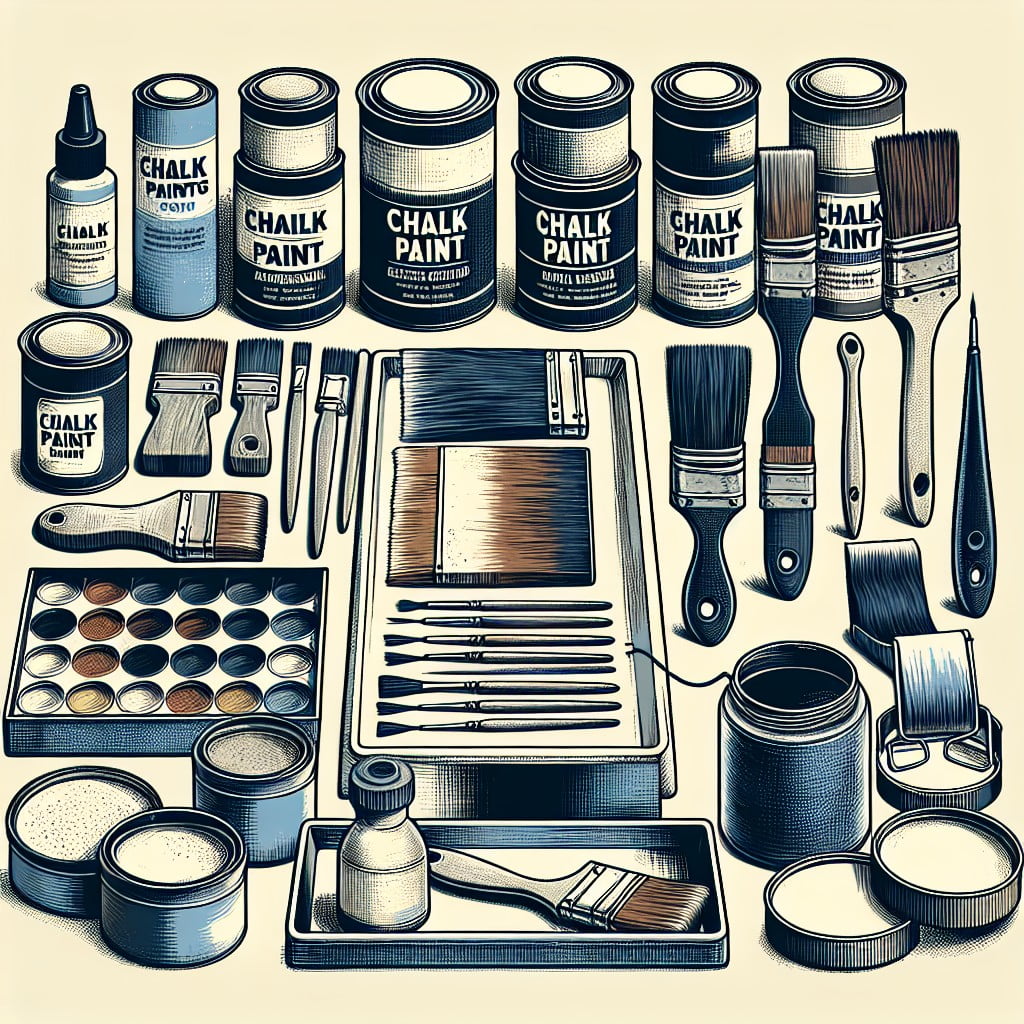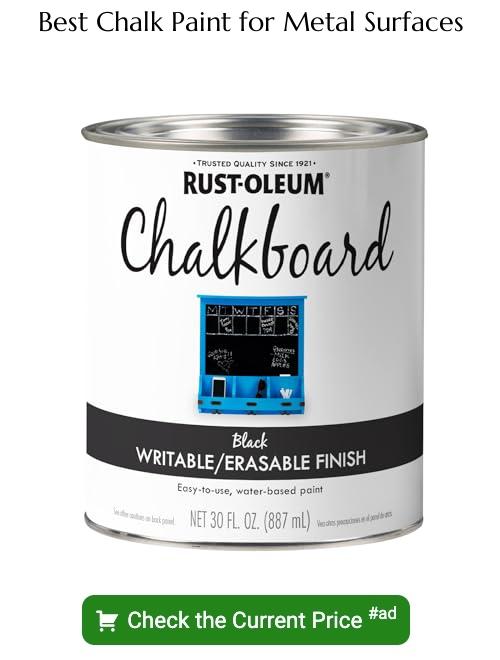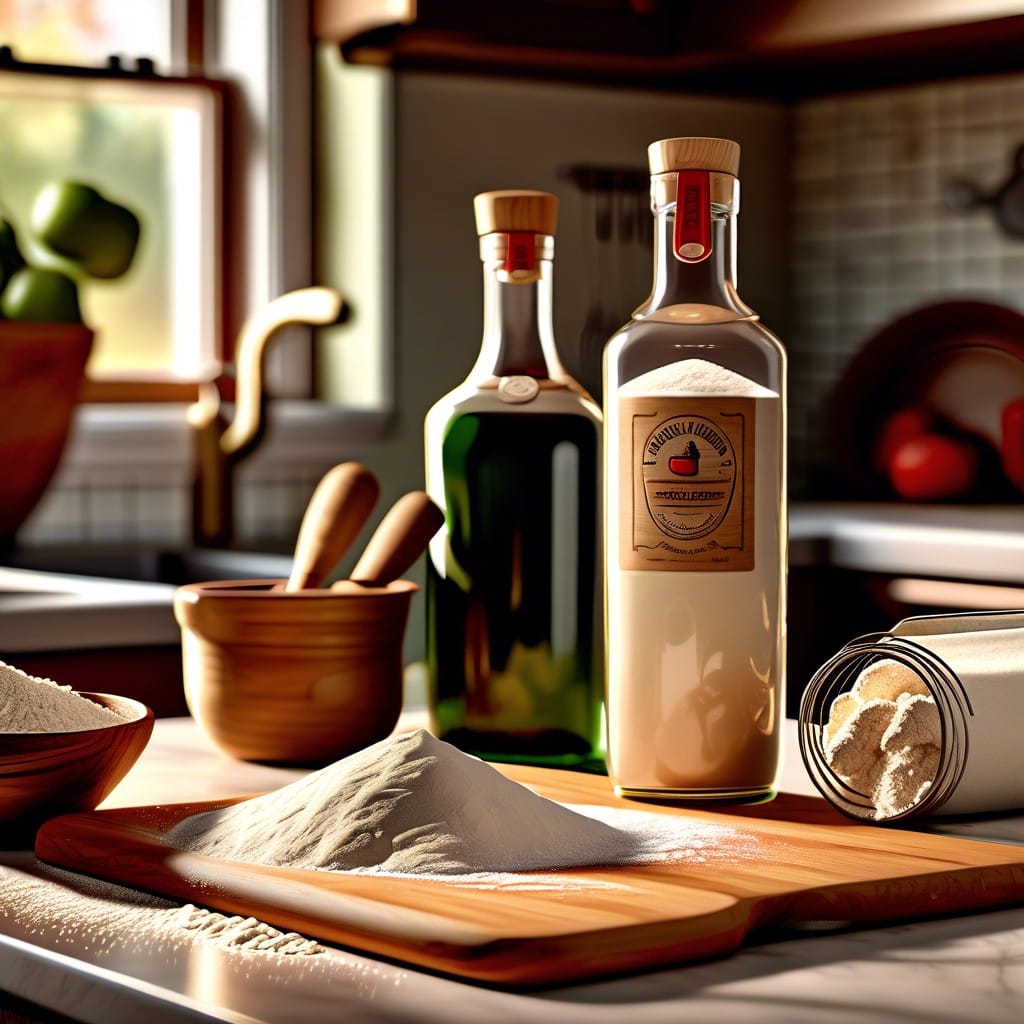Last updated on
Discover how to flawlessly apply chalk paint on metal, transforming any ordinary metallic item into an intriguing piece of art.
Key takeaways:
- Chalk paint adheres easily to metal, requires minimal prep.
- Essential supplies: chalk paint, primer, sandpaper, brushes, tape.
- Prepare metal: clean, sand, remove rust, apply primer if necessary.
- Apply chalk paint: clean, sand, paint, allow to dry, assess coverage.
- Seal the paint: choose the right sealer, apply thin layers, allow to cure.
Benefits of Using Chalk Paint On Metal

Chalk paint adheres to metal with ease, often requiring minimal surface prep compared to other paint types. Its unique formula results in a beautiful matte finish that adds a vintage or shabby chic look to metal furnishings and décor.
Not only does it usually cover with one or two coats, but it also dries quickly, speeding up the transformation process. The paint’s versatility allows for distressing and layering techniques, giving DIY enthusiasts the freedom to personalize items to their taste.
Chalk paint’s water-based composition ensures easy cleanup with soap and water, and it’s low in volatile organic compounds (VOCs), making it a more environmentally friendly option for indoor projects.
Essential Supplies for Chalk Painting Metal

Before diving into your project, gather all the necessary tools to ensure a smooth and successful application:
- Chalk Paint: Opt for a high-quality chalk paint suitable for metal surfaces.
- Primer: If the metal is non-ferrous like aluminum or brass, a specialized metal primer will improve paint adhesion.
- Sandpaper: Have fine-grit sandpaper on hand to prep the surface; 220-grit is ideal for lightly roughening a glossy finish.
- Clean Cloths: Use lint-free cloths for wiping down the metal surface after sanding.
- Brushes: Acquire brushes with synthetic bristles designed for use with water-based paints.
- Painter’s Tape: This will be essential for masking off any areas where you don’t want paint.
- Drop Cloths: Protect your work area from spills and splatters with plastic sheets or old newspapers.
Assembling these items beforehand streamlines the process, allowing you to focus on the artistry of your project.
Preparing Metal Surfaces for Chalk Paint
Before diving into the application of chalk paint, it’s essential to ensure your metal surface is primed for the best possible outcome. Start by giving the piece a thorough cleaning to remove any grease, dirt, or rust. A mixture of warm water and mild detergent works well for this purpose, and for tougher rust spots, a wire brush or sandpaper may be required.
If the object has any old paint or a glossy finish, lightly sand the entire surface with medium-grit sandpaper. This scuffing helps create texture, allowing the chalk paint to adhere better. After sanding, wipe down the piece with a damp cloth to remove any dust and let it dry completely.
For metals prone to rust, such as iron, consider applying a rust-inhibitor primer to protect your work in the long term. When the surface is clean, smooth, and dry, you are ready to proceed with the chalk paint application. Remember, spending time on preparation can significantly enhance the durability and finish of your painted metal item.
Step-by-Step Guide to Applying Chalk Paint to Metal
Begin by thoroughly cleaning the metal object to remove any grease, rust, or peeling paint. A mixture of water and mild detergent works well for this task, followed by a wipe-down with plain water to remove soapy residue.
Once the metal is dry, lightly sand the surface with fine-grit sandpaper. This scuffs up the surface slightly, ensuring better paint adhesion. Wipe away the dust with a tack cloth or a lint-free rag.
If any rust remains, treat those areas with a rust neutralizer. Follow the product’s instructions carefully, as this will prevent rust from bleeding through the new paint.
Apply a thin coat of chalk paint using a paintbrush or roller. For intricate metal objects, a smaller brush may be necessary to get into tight spaces. Brush strokes should be smooth and consistent. Avoid overloading the brush to prevent drips and runs.
Allow the first coat to dry completely. Chalk paint typically dries quickly, but check the manufacturer’s recommended drying times.
Assess the coverage after the first coat. If needed, apply a second coat for full coverage, again allowing it to dry thoroughly.
Distressing or applying waxes for an antiqued look can be done after the final coat has dried, if desired. Use fine sandpaper or steel wool to gently remove paint from raised areas or edges to create a worn effect.
Finish with a clear sealing coat if the painted metal will be used outdoors or handled frequently. This helps protect the paint from chipping and the elements. Apply according to the manufacturer’s directions and allow to cure completely before using the item.
Techniques for Creating Textured Effects With Chalk Paint On Metal
Experiment with different brushes to find the one that best suits the texture you aim for. A bristle brush can leave prominent marks, ideal for a rustic finish, while a foam brush might smooth out for a more subtle texture.
Layering is a technique where you apply multiple layers of chalk paint, allowing each layer to partially dry before applying the next. This can create a rich, dimensional texture that adds depth to the metal piece.
Adding texture mediums to the chalk paint before application can produce unique effects. For example, sand or baking soda mixed into the paint can provide a gritty, aged look.
Stippling involves dabbing the paint onto the metal surface with a stiff brush. This method can create a pocked, uneven texture that mimics antique metalwork.
Dry brushing, lightly dragging a dry brush with a minimal amount of paint over the surface, can highlight raised areas and edges, perfect for giving the piece a worn, distressed look.
To create a linen-like texture, use a notched trowel or comb to make linear patterns in wet paint, offering a look that can mimic fabric or brushed steel.
Remember, when creating textures, it often helps to work in small sections so that the paint remains malleable and the desired effect can be achieved before the paint dries. Additionally, practicing on a spare piece of metal can allow you to perfect your technique before applying it to your final project.
Tips for Achieving a Smooth Finish With Chalk Paint On Metal
Creating a sleek and even surface on metal with chalk paint can elevate your project from homemade to professional with just a few thoughtful practices:
1. Sand Before You Start: Begin with a smoothly sanded metal surface to eliminate any imperfections that might show through the paint.
2. Thin Layers are Key: Apply the chalk paint in thin, uniform coats. This approach allows for quicker drying times and reduces the likelihood of drip marks.
3. Use the Right Brush: A high-quality synthetic brush or a foam roller designed for smooth finishes can help prevent brush marks and ensure a more uniform application.
4. Sand Between Coats: Once dry, gently sand the first coat with fine-grit sandpaper to remove any brush strokes or bumps. Wipe away the dust before applying the next layer.
5. Extender is Your Friend: Consider adding a paint extender to your chalk paint. It slows down the drying time, allowing the paint to level out and minimize brush strokes.
6. Consider Spraying: If you have the equipment, spraying chalk paint can provide the smoothest possible finish and professional-looking results.
Employing these tips can significantly enhance the final appearance of your metal projects, making each piece look impeccably finished.
Drying and Curing Time for Chalk Paint On Metal
After applying your chalk paint, patience is key as you wait for it to dry. Typically, drying time can be as short as 30 minutes to an hour, depending on the paint brand and environmental conditions. However, while the paint may feel dry to the touch relatively quickly, full curing is a longer process. Curing hardens the paint, ensuring maximum durability, and can take up to 3-4 weeks.
During this time, it’s essential to handle your painted metal item with care to avoid nicks or smudges. To facilitate even curing, store the item in a space with consistent temperature and low humidity. Keep in mind that the wait will be worth it when you have a beautifully finished, long-lasting surface on your metal object.
Protective Top Coats for Chalk Paint On Metal Surfaces
Applying a protective top coat over chalk paint is crucial for durability, especially on metal surfaces which may be exposed to the elements or frequent handling. Here’s how to ensure lasting results:
1. Choose the Right Sealer: Options include wax, polyurethane, polycrylic, and specialty sealants designed for metal. Each has different sheens and durability levels; for outdoor use, polyurethane often provides the most robust protection.
2. Clean Before Sealing: Ensure the painted surface is free from dust and debris. Wipe it down with a damp cloth and allow it to dry completely to avoid sealing in particles.
3. Apply Thin Layers: Multiple thin layers are better than a single thick layer. This method prevents drips and ensures even coverage, reducing the chance of brush marks.
4. Use the Right Tools: Apply wax with a lint-free cloth or wax brush. For liquid sealers, a high-quality synthetic brush or a foam applicator ensures a smooth application.
5. Cure Time: Respect the sealant’s cure time, which can vary from a few hours to several days. Full curing is necessary for maximum protection and hardness.
6. Reapply as Needed: Over time, sealers can wear down, especially on frequently used items. Inspect the surface periodically, and reapply a new coat of sealer as needed to maintain protection.
Remember, the choice of top coat can alter the final appearance of your paint finish, so consider the desired look, whether it’s matte, satin, or glossy, and the specific use of the metal object when selecting your sealer.
Maintenance and Care for Chalk Painted Metal Items
Maintaining the beauty of chalk-painted metal items is straightforward. To ensure longevity:
1. Regular Dusting: Use a soft cloth or microfiber duster to gently remove dust particles, avoiding scratches on the surface.
2. Cleaning: For more thorough cleaning, opt for a mildly soapy water solution. Dip a soft cloth in the mixture, wring out excess liquid, and wipe the surface softly. Rinse with a damp cloth and dry thoroughly to prevent rust.
3. Avoid Harsh Chemicals: Steer clear of abrasive cleaners and potent chemicals that can deteriorate the paint and wax finish.
4. Wax Application: Reapply a layer of protective wax every few months or as needed, depending on usage, to refresh the protective layer and sheen.
5. Touch-Ups: Keep some original paint for quick touch-ups on areas that experience frequent handling or are prone to wear.
By adhering to these care guidelines, your chalk-painted metal creations can maintain their charm and character for years to come.
Creative Ideas and Inspiration for Chalk Paint Metal Projects
Dive into a world of color and creativity by transforming metal household items into unique pieces with a rustic charm. Consider the transformation of a dated metal filing cabinet into a chic piece of office furniture with a splash of soft pastels. Picture old kitchen canisters reborn with vibrant hues and distressed finishes, adding character to your kitchen counters.
Revitalize outdoor metal patio chairs by selecting bright colors or pastel shades that complement the natural greenery of your garden. For a more personalized touch, stencil designs onto metal trays or planters, making every piece a reflection of your style.
Jewelry organizers can also benefit from the application of chalk paint, turning simple metal frames into elegant storage solutions with a shabby chic aesthetic. Even light fixtures can become statement pieces with a coat of chalk paint; by choosing the right shade, you can breathe new life into a drab room.
Remember, the key is to let creativity lead the way—experiment with color layering, sanding for a distressed look, or even mixing colors to achieve the perfect shade for your masterful metal makeover.
Troubleshooting Common Issues With Chalk Paint On Metal
Experiencing bumps or an uneven texture after painting? Gently sand the surface with fine-grit sandpaper and apply a thin, even layer of paint. Always allow adequate drying time between coats to avoid this issue.
If you’re seeing brush strokes, it often means your paint may be too thick. Thin it out with a small amount of water for a smoother application. Remember to use a high-quality brush and apply paint with light, even strokes.
Rust formation is a potential problem when working with metal. To prevent this, ensure the surface is properly primed before applying chalk paint. If rust has already developed, remove it with a wire brush and treat the area with a rust inhibitor.
When the paint’s adhesion seems weak, causing it to peel or scratch off easily, surface preparation may have been insufficient. Thoroughly clean the metal and apply a bonding primer to provide a suitable base for the paint.
Encountering a dull finish despite expecting a matte look? This could be due to over-sanding. Lightly sand the final coat with ultra-fine sandpaper, then wipe away the dust before applying a wax or sealant to enhance and protect the finish.
For persistent streaks or discoloration, consider whether the metal has been completely cleaned of oils or residues. Clean the surface with a degreaser or denatured alcohol before painting. If the problem persists, apply a coat of shellac-based primer to block any stubborn stains.
Remember, patience is key. Allowing the paint to cure completely, which could take several days, will yield the best results and help avoid many common issues.
Can I Use Chalk Paint On Metal Outdoor Furniture?
Chalk paint adheres well to metal outdoor furniture, providing a matte, vintage look that many homeowners adore. When using chalk paint on exterior pieces, it’s vital to ensure that the surface is clean and free from rust.
Here are some points to consider:
- Weather Conditions: Apply chalk paint on a dry day to prevent moisture from affecting the finish.
- Surface Priming: While not always necessary, a primer can enhance paint adhesion on slick metal surfaces.
- Multiple Coats: Apply several thin coats rather than one thick layer to avoid drips and to provide uniform coverage.
- Wax vs. Sealant: Consider using a sealant rather than wax if the furniture will be exposed to the elements, as wax can melt or become sticky in hot climates.
- Durability: While chalk paint can give a beautiful finish to metal outdoor furniture, it may require touch-ups over time due to exposure to sun and rain.
By following these points, your outdoor furniture can achieve a charming and durable finish with chalk paint.
Do You Have To Seal Chalk Paint On Metal?
Sealing chalk paint on metal is not mandatory, but it is highly recommended. Here’s why:
- Durability: A sealer adds a layer of protection, safeguarding your paint job against scratches, chips, and the wear and tear of everyday use.
- Weather Resistance: For outdoor metal items, a sealant ensures that your chalk paint resists rain, sunlight, and fluctuating temperatures.
- Finish Options: Sealers come in various sheens, allowing you to choose the level of glossiness or matte finish to suit your stylistic preference.
- Prevents Rust: On metal surfaces, a proper sealant can prevent oxidation, keeping rust at bay and extending the life of the item.
In essence, while you can leave chalk painted metal items unsealed, applying a sealant offers valuable benefits that can enhance and preserve the beauty and functionality of your project.
Does Chalk Paint Work On Various Brands Like Annie Sloan, Rust-oleum Or Krylon?
Chalk paint has gained a reputation for its versatility and ease of use on a variety of surfaces, including metal. Among the plethora of brands offering chalk paint, notable ones include Annie Sloan, Rust-Oleum and Krylon, each bringing unique benefits to your metal projects.
Annie Sloan, the original creator of chalk paint, offers a formula that requires minimal surface preparation, making it a time-saver for metal applications. Its thick consistency allows for extensive coverage with a single coat, although a second coat can intensify the color and finished look.
Rust-Oleum provides a range of chalk paints specifically formulated for a durable, rust-resistant finish on metal. The brand is known for its protective qualities, meaning pieces can often withstand the elements, ideal for outdoor furniture.
Krylon carries chalk paint in a convenient spray form. This variation speeds up the application process and offers a more uniform coat on intricate metal designs. It’s an excellent option for those looking for quick drying times and efficient coverage.
Despite these brand differences, most chalk paints will adhere well to metal, especially when applied according to the manufacturer’s instructions. For the best outcome, ensure the metal surface is clean, and remember to seal the paint for longevity, regardless of brand.
FAQ
How do you prepare metal for chalk paint?
To prepare metal for chalk paint, ensure it is clean by gently wiping it with a damp cloth, using warm soapy water if needed, without the necessity for sanding or priming.
Does chalk paint come off metal?
Yes, chalk paint can be effectively removed from metal using tools such as a putty knife, coarse sandpaper, or steel wool.
Will chalk paint stick to galvanized metal?
Chalk paint can indeed be applied to galvanized metal to revamp its appearance effectively.
Does chalk spray paint stick to metal?
Yes, chalk spray paint can effectively adhere to metal surfaces.
Can chalk paint be used effectively on rusted metal surfaces?
Yes, chalk paint can be used effectively on rusted metal surfaces, ideally with proper preparation and priming.
What are the best brands of chalk paint for metal application?
Among the highly recommended brands for chalk paint on metal include Annie Sloan, Rust-Oleum, and FolkArt.
Is a primer necessary when applying chalk paint to metal?
No, a primer is not necessary when applying chalk paint to metal.
Recap:





